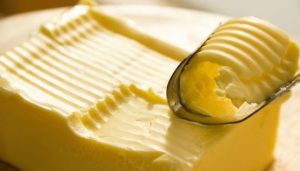
Margarine, a popular butter substitute, serves as a versatile ingredient in various culinary applications. Crafting your own margarine at home allows you to tailor its flavor, texture, and ingredients to suit your preferences, ensuring a healthier, preservative-free alternative to store-bought varieties. With a few basic ingredients and a simple process, you can prepare homemade margarine in your kitchen.
Ingredients Needed
1. Base Oil: Choose a high-quality vegetable oil such as sunflower, safflower, canola, or soybean oil as the primary component of your margarine. The oil’s taste and nutritional profile will influence the final product.
2. Liquid: Include a liquid element to add moisture and aid in emulsification. This can be water or plant-based milk like almond, soy, or oat milk.
3. Emulsifiers: Emulsifiers are essential to blend oil and liquid together. Lecithin or soy lecithin in small amounts serves as an effective emulsifier.
4. Flavoring Agents: To enhance the taste, incorporate ingredients like salt, herbs, spices, garlic, or onion powder. You can experiment with different flavors to achieve your desired taste profile.
5. Optional Additions: Consider adding nutritional yeast for a hint of umami or turmeric for a golden color.
Steps to Make Homemade Margarine
1. Gather Ingredients: Measure the base oil, liquid, emulsifiers, and any desired flavoring agents according to your recipe or preferences.
2. Mix the Emulsifiers: Combine the emulsifier (such as lecithin) with a small amount of the chosen liquid in a separate bowl. Stir thoroughly until the emulsifier dissolves completely in the liquid.
3. Emulsification Process: In a saucepan, heat the base oil gently over low to medium heat. Slowly add the emulsifier mixture to the warm oil while stirring continuously to combine them uniformly.
4. Flavor Enhancement: Add salt and any chosen flavoring agents to the oil mixture. Adjust the quantities according to your taste preferences. Incorporate nutritional yeast, spices, herbs, or garlic/onion powder to impart desired flavors.
5. Blend Thoroughly: Using a blender or immersion blender, carefully blend the oil and flavoring mixture at high speed. This step helps in emulsifying the ingredients further and achieving a smooth, creamy consistency.
6. Cool and Solidify: Allow the blended mixture to cool down at room temperature. As it cools, the margarine will start to solidify. If needed, place it in the refrigerator for quicker solidification.
7. Storage: Once the margarine solidifies to your desired consistency, transfer it to an airtight container or mold it into a butter-like shape using a mold. Store the homemade margarine in the refrigerator to maintain its freshness. It can typically last for a few weeks to a month.
Additional Tips
Experiment with different oils to achieve varied flavors and textures in your homemade margarine.
Adjust the ratio of liquid to oil to tailor the margarine’s consistency to your preference – more liquid results in a softer spread.
Incorporate natural colorants like turmeric for a golden hue or paprika for a slight tint.Label and date your homemade margarine to keep track of its freshness and use it within a reasonable time frame.







